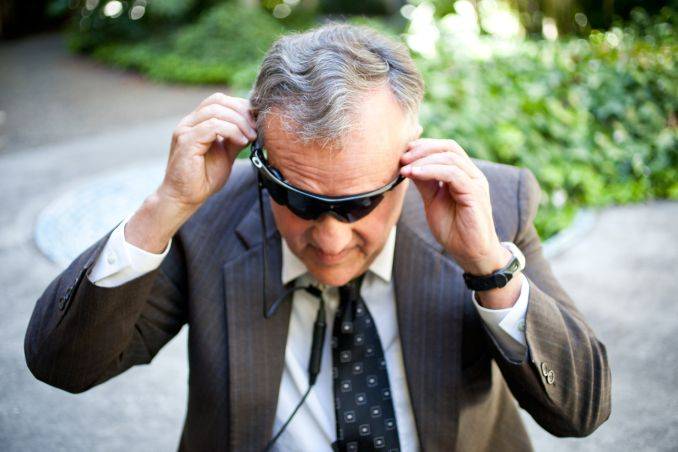This post was first published on 15th September, 2014.
In my earlier posts (Post1, Post2, Post3, Post4), we discussed the mobility of a visually disabled person that is directly proportional to his awareness of the environment. The more he knows about his surroundings, the easier it gets for him to move around. An issue in achieving this, is the extent of the person’s sensory involvement. Most blind people use auditory signals to understand the state of the environment and a navigation device is better off leaving sound signals alone.
The touch is another sense that is extensively used for mobility. Owing to the human body’s largest organ, the sense of touch, heat, etc, can effectively be used to send signals about the environment without disturbing hearing abilities or standard touch spots like fingers. US Patent Application: 20140184384 – Wearable navigation assistance for the vision-impaired proposes a very innovative use of existing technology to achieve said end. Published in July, 2014, the first claim of the patent reads as follows:
“1. An assistive device, comprising: a) a sensor adapted to detect information using a first modality;b) an actuator adapted to convey information using a second, different modality; andc) a controller adapted to automatically receive information from the sensor, determine a corresponding actuation, and operate the actuator to provide the determined actuation.”
From my understanding, the invention works as follows:
I wear several gadgets, which have the ability to sense and actuate certain signals. The gadgets gather information from surroundings through IR, SONAR, visual signals etc., and transmit the same to me in the form of vibration, heat, pressure etc. The gadgets are normally worn on different parts of the body like arms, legs, chest etc., and locations like pockets of clothes, mounted on spectacles etc. They gather information from the surroundings in different directions and transmit the information to me. The gadgets work as a system to provide me with intelligible information.
Simply put, if I am wearing this invention and walking on the road and there is a low lying branch, the gadget mounted on my spectacles or probably on my ear will spot it and nudge me. Let’s say I ignore it and plough ahead, it will nudge me harder and harder as I get closer, until of course I am hit by the branch. This sounds good, really good. But, most good things are like writings on water, so to speak, especially in the sightless world.
Being optimistic, I Cant wait for the market release of this wearable gear patent filed by Research Foundation Of The City University Of New York.
Image: from here



